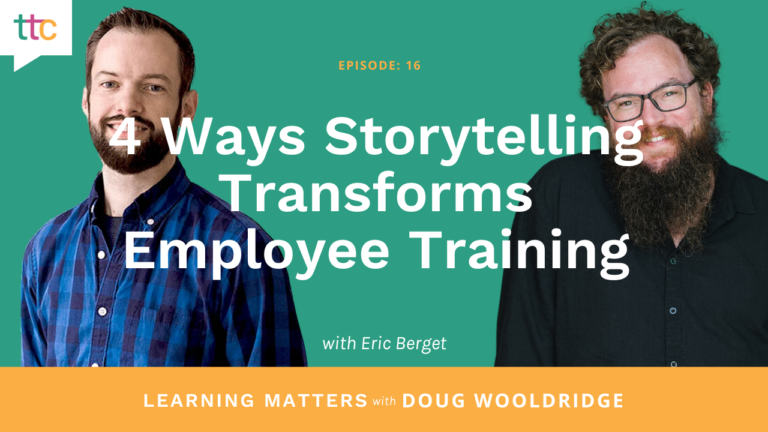If you really want to attend an upcoming conference like ATD International Conference and Expo but the fear of asking your boss to invest in your education is greater than your FOMO (fear of missing out), this guide is for you! Having recently attended the Traffic & Conversion Summit (thanks to my supportive ttc family) and after talking with a few fellow learning and development friends hoping to attend an upcoming learning conference but lacking the personal funds to support their dream — I decided to put together 4 simple steps to convince your boss that ATD24 is the place to be (all expenses paid!).
Step 1: Do Your Research
For most of us, the “ask and you shall receive” angle rarely works. Even when you have a trusting boss who supports your intrapreneurial dreams — you still need to do your research ahead of time if you want to get the green light to go forth and conquer. Here are a few things you should look into before going for the ask —
Who is hosting this conference and, more importantly, why are they a credible voice in the industry? What’s their track record? Is this the inaugural event or are they event extraordinaries with years of conferences under their belt? Remember the infamous Fyre Festival of 2017? Having a few previous iterations of an event allows for all the kinks to be worked out, which helps take the risk of investing off your boss’s mind.
Where will the conference be held? If out of town, you’ll need to take into account the cost of travel, lodging, and other expenses like food, which can add up quickly. You may be able to justify the cost of travel if you plan to hit two birds with one stone (keep reading for tips & tricks to maximize your time).
Speaking of saving dollars — what’s the cost of the conference? You may be able to take advantage of some early bird or group rate discounts. Doing your research well in advance can ensure that you don’t miss out on those early booking prices, and it’s possible the urgency may help your boss make their decision quickly to take advantage of the lower cost!
Which sessions do you plan to attend? If you’re lucky, the conference will have a few key sessions (like keynote speakers and workshops) lined up. Check the program to gather information on what knowledge and skills you’re likely to walk away with.
Pro Tip: If it’s too early in the game, I recommend referring to your good friend Google to access a lineup from last year’s conference. If you can’t find anything online, reach out to the hosts to see which topics they’re planning to cover. The event may sound great on paper, but if the speakers aren’t covering topics that you can actually implement, it’s probably not worth your time or investment.
Which vendors do you plan to meet with? Maybe your team has been considering a new project software or instructional design tool. Most conferences have an exhibition hall that you can visit to learn more about industry-related software and tools.
Related Webinar: Must-Have Tools for Any Instructional Design Budget
You’ll want to make sure that you have enough information on hand (including who is the ultimate decision maker) when it comes time for the next step. Your boss may not be the one to make the call — if that’s the case, they will need to be informed and sold on your attendance so they can champion on your behalf.
Pro Tip: Larger conferences will likely have a resource page that offers tools and templates to make the research easier to compile. ATD, for example, has an investment calculator, session and exhibitor worksheet, and a customizable letter that you can use to plug in and play with your information. No need to reinvent the wheel!
Step 2: Explore Your Options
For pricier conferences, there may be tiered pricing or payment plans you can explore. This is especially helpful to have on hand in the event your boss says “no.” You might be able to follow up with more affordable options like purchasing a virtual ticket.
Step 3: Maximize Your Time
Another thing to consider is the timing of the event itself. If it’s happening during a particularly stressful time of year when you know your team is most busy, you’re likely not going to get approval. That being said, you could maximize your time by getting more bang for your buck. Here’s how:
- Bookend the conference with a team retreat or meeting. This is something we like to take advantage of if we are already planning to travel. Being a virtual team, it’s nice to use conferences as an excuse to get together if we have multiple team members planning to attend.
- Attend multiple events. You may find that multiple conferences or meetups in your industry are happening around the same time in the same city. Think two birds one stone here!
- Schedule in-person meetings. Chances are you’ll have friends, prospects and/or clients attending the same events. Use the conference as an opportunity to mix & mingle with your peers.
Step 4: State Your Case
Alright, now that you have all the information on hand, it’s time to explain the benefits and state your case! Here’s where those templates I mentioned earlier come in handy — use them but don’t forget to customize them for the intended audience.
Some key points you’ll want to make sure you cover:
- How will the company benefit? Start with this. Marketers know the value of speaking to the pain points of their audience. If you expect your company to foot the bill, they need to know how they are going to benefit from their investment.
- How will your boss benefit? If someone else is stating your case for you, you want to make sure there’s something in it for them. They’ll be more likely to vouch for you if they feel like it’s a win-win.
- Which sessions are you interested in and why? Again, focus on the audience here. If your business partners have been talking about a particular workplace challenge like generational gaps and there’s a session that promises a solution — tell them you plan to attend and report back on what you’ve learned.
- How do you plan to apply what you’ve learned post-conference? Come up with a follow-up plan and share your intentions. Plan a time to meet with your team post-conference to share your findings, brainstorm ways to implement the strategies you learned, and prioritize what you’ll take action on together.
Back-Up Plan: Invest in Yourself
Hopefully, your boss will see the clear value in sending you to the conference of your choice, but if not, there’s still hope for investing in yourself and your future! Whether they weren’t quite convinced or the budget for continued education was already allocated to other initiatives, when all else fails — save up to spring for the ticket out of your personal pocket. This will show your boss initiative and commitment to your team. Attending the event may also give you some extra ammunition for next year’s request if you can successfully implement what you learned.
And hey, if your boss is impressed by the knowledge you’re sure to gain (because you did your research), you may be lucky enough to get part of the trip covered. Or perhaps you can at least convince them to pay for your time there. In any case, as long as you follow these 4 steps, you can ensure that ATD24 (or any other learning conference for that matter) is the right place for you to be!






